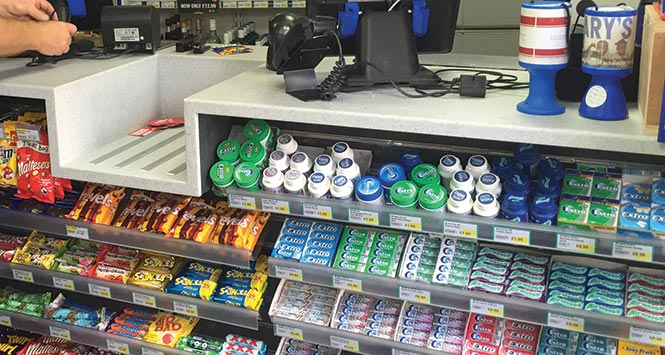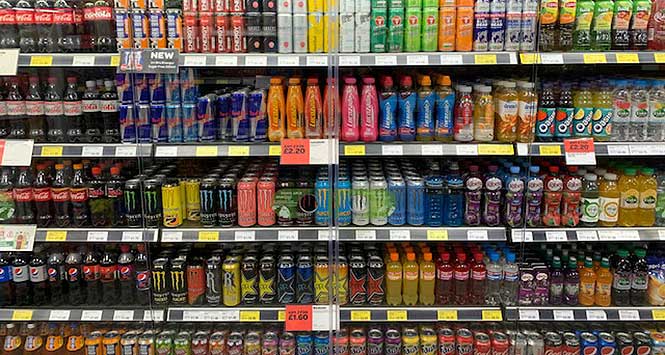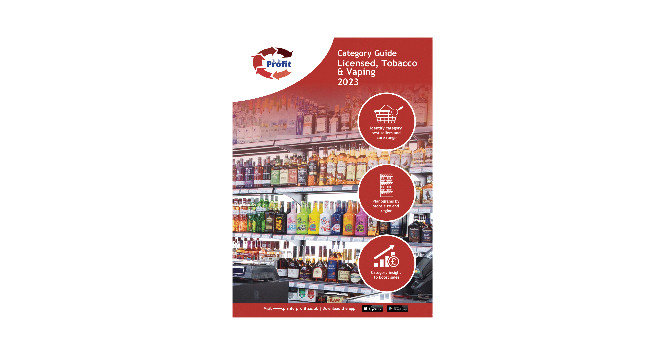What exactly does category management mean? The true answer is probably that it means different things to different retailers, but the endgame is exactly the same: optimising sales and profits in your store.
The bones of category management are pretty simple to outline, but actually implementing them in a live retail environment can be another thing entirely. With so many moving parts in a typical Scottish convenience store, it can be a devilishly complex task to properly manage every category in the store, paying particular attention to the top eight or 10 categories that deliver the vast majority of sales and profits.
In reality, it’s practically impossible to be aware of every variable every time, which is why it makes sense to accept your limitations and instead rely on the technology and support that’s out there in abundance to help make the critical task of category management quicker and easier for you and your team. If there was ever any doubt, the answer is no longer about working harder, it’s all about working smarter.
One of the smartest things you can do, of course, is remain open to taking on board the advice of the many massive suppliers who are prepared to work with you to make the best of your business. If you win, they win. It’s that simple.
Knowing your customers’ shopping habits gives you a distinct advantage when it comes to getting them to fill their basket. Thankfully you’re not alone in trying to work this out, as this indispensible guide to category management shows.
Yes, we all know that manufacturers are prone to offering category advice that is biased to some extent towards their own products and brands – but an experienced retailer can spot these subtle biases quickly and easily and will still find much that is useful in the plethora of advice available from companies like Wrigley, Tetley, Heineken, Blu, pladis and Imperial Tobacco.
These companies spend millions understanding their category, investing in it, launching new products to liven it up, and more. Most of the time they really do know what they’re talking about and they only way they can make sales is when you make sales. It’s an interdependent relationship and requires both parties to play the game and work together to deliver the crucial sales all stores need in today’s marketplace.
The reality is that these companies do indeed have a strong interest in category growth, not just brand growth – and if the category grows, retailers benefit.
- There are a number of ways (as defined by IGD) that retailers will typically approach category management, from the extremely proactive at one end of the spectrum to to the extremely reactive, or even non-existent at the other. The goal for modern retailers is to move up the ladder at all times.
- Strategic (full process, cross-functional collaboration, customised research & initiatives, strategic alignment)
- Innovative (shorter streamlined process, little customised research, selective investment, test new initiatives)
- Tactical (informal process, tactical quick wins, ranging & merchandising, promotions, etc)
- Transactional (sales-focused approach only, minimise costs)
- Do not actively practice category management
Unique challenges
Every single convenience store in Scotland is different, which brings category management challenges not faced to the same extent by supermarkets or discounters where the big box format is replicated almost like-for-like across stores.
That doesn’t mean however that each store should be treated differently, particularly when it comes to the key categories. Good category management in top categories looks remarkably similar across convenience stores. The fact that the beer fixture is in a different place and is a different size in each store doesn’t fundamentally affect how that fixture should look, for instance. Best practice is best practice and that’s what every retailer is aiming for. Ranging and merchandising those categories that drive the revenue of every store requires a structure that should be replicated throughout the land.
It is highly likely that around 90% of your sales come from around eight or so categories. These are the categories that keep your store alive and are the reason most people come into your store at all. With a limited amount of time at your disposal, the smart route is to focus firstly on these categories.
The basics
At the heart of category management are some very simple focuses: availability, range and merchandising. or, to put that another way: get the right range for your customer base, keep it in stock at all times, make sure your products are where customers can easily find them and make the fixture attractive and eye-catching.
If you’re a member of a symbol group, you should have as much support and advice as you need to achieve all of these aims day in, day out. The trick is to keep checking that the advice you are following is reliable and up to date, and that you are implementing that advice efficiently and effectively. With a thousand tasks to complete every day, category management is often pushed down the priority list to make room for issues that are seen as more pressing. But it’s vital to diary in some regular time to review your practices, particularly around those key categories.
The bare minimum that retailers should be aiming to achieve should include:
- Review EPoS and place orders according to sales, not habits
- Listen to advice from suppliers
- Regularly review range and delist slow sellers
- Know what NPD will be in greatest demand
- Train staff to minimise out of stocks
- Make promotions highly visible
- Walk your shop like a customer – do you like the layout? Does it encourage you to spend more?
- Regularly visit your competitors – how does your ranging and merchandising compare?
- Use secondary and tertiary sitings
- Make use of POS and other in-store theatre
Range
Modern Epos systems make checking your sales data a breeze. Merging that store-specific data with regional or national data provided by your symbol group or by a big manufacturer is the real challenge here. It’s more of an art than a science. While you may have some very quirky sales trends the truth is likely to be that your perfect range isn’t all that different from a store a hundred miles away.
Review your range regularly and don’t be afraid to delist slow-selling lines and add in NPD, particularly if that NPD is backed by big-money marketing campaigns.
Availability
You can’t sell it if you’re customer can’t find it. Put in places measures to ensure your ordering system gets enough stock in on each delivery to make sure you don’t end up with out of stocks. This is clearly even more vital in key categories and in categories with high rates of sale like soft drinks, tobacco and alcohol.
It’s also important to put in place systems that make sure stock in the storeroom makes its way regularly and efficiently onto the shelves. There’s little more frustrating than missing sales of a product because the shelf was empty but there was a case of it sitting the store room.
Merchandising
Most retailers have access to more POS than they could possibly use but the vast majority of it is free and much of it is great quality. Whether its HODs or shelf edge strips, bus stops or wobblers, there’s plenty of equipment available to bring a fixture to life and push up those critical impulse sales.
A little bit of in-store theatre can also go a long way, especially if it’s themed around important or seasonal events like big sporting competitions, local community events, Easter, Halloween or Christmas. Create some excitement and your customers will buy into it and appreciate the effort.
Mission shopping
One trend that has impacted on traditional category management practices has been mission shopping. Creating mission zones in store – for breakfast or dinner for tonight or big night in, for example – has blurred the category management lines, dragging products into areas of the store where they’ve never been before.
The key here is in communicating these zones efficiently to shoppers. They’ll still set out to look for a 2-ltr bottle of Irn-Bru on your ambient carbs fixture unless you make it easy for them to understand the big night in fixture by signposting it clearly and explaining to them why the fixture exists.
Mission shopping only adds another layer of complexity to an already complex process but it doesn’t change any of the fundamentals of category management.
At the end of the day, we know that we can’t get it right every time – but that shouldn’t stop us trying. Every improvement you make helps create a better environment for your customers and happy customers spend more.
This guide will help you achieve exactly that – and don’t be afraid to contact the manufacturers featured if you want more support and help from them.





